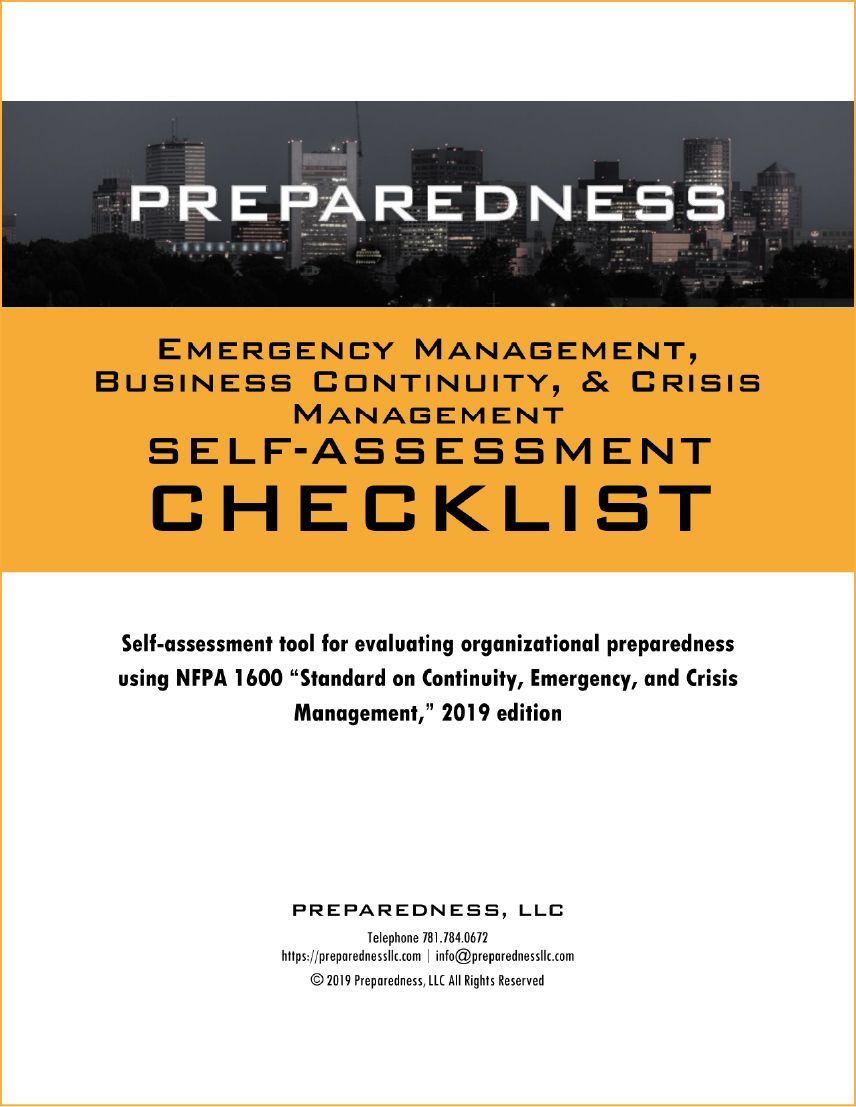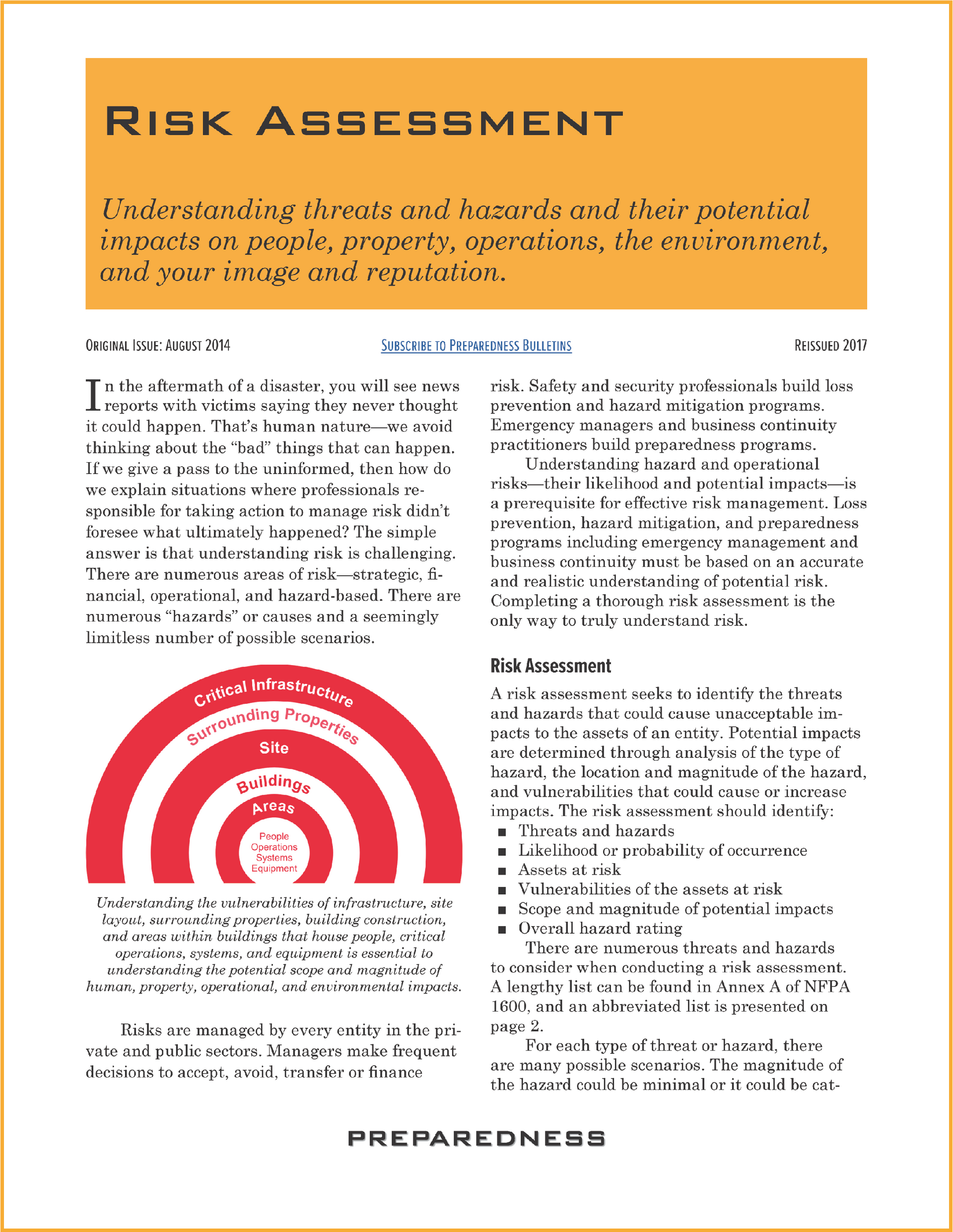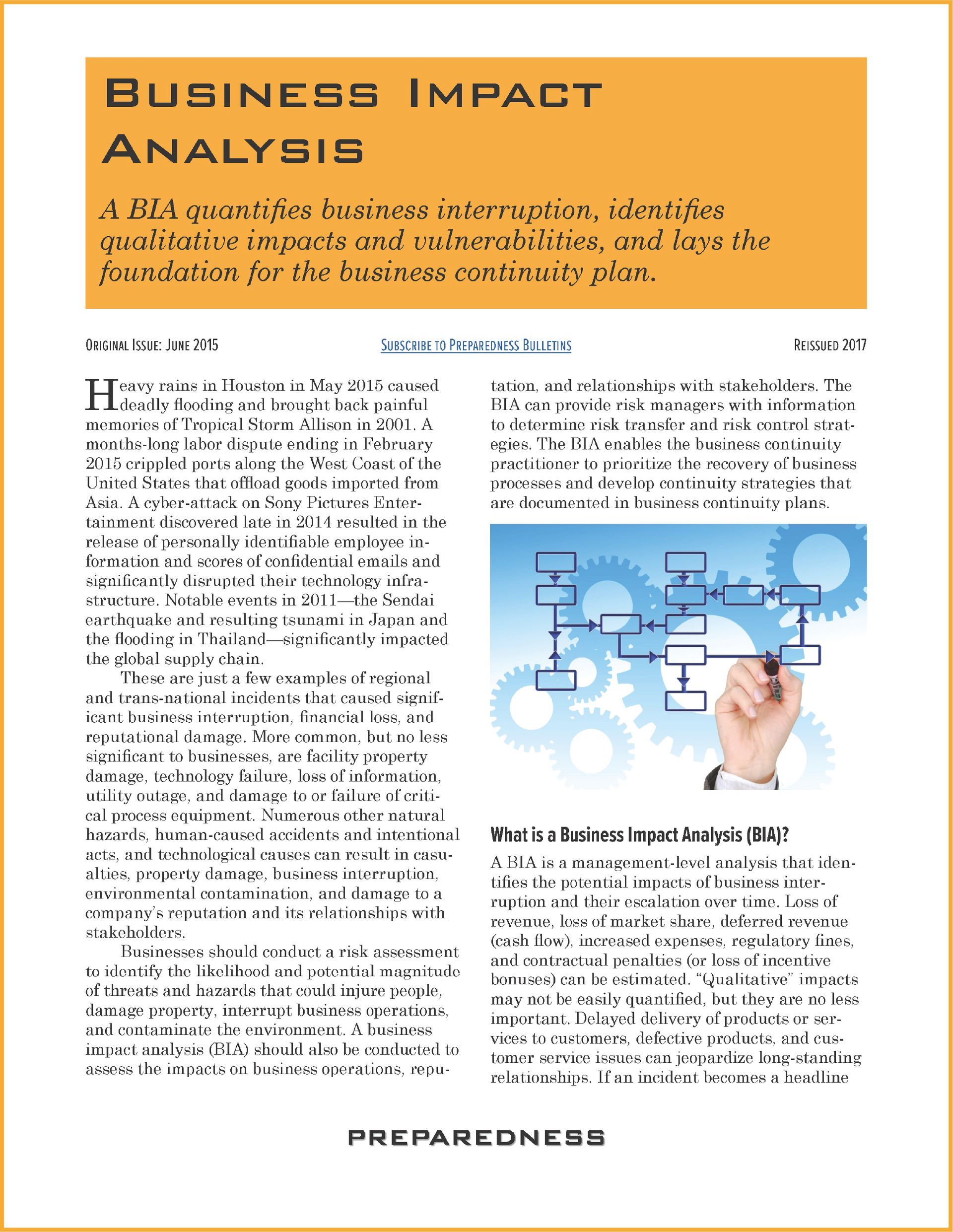Risk Assessment, Loss Prevention & Risk Mitigation
Understanding hazard and operational risks is fundamental to the development of strategies for loss prevention, deterrence, hazard mitigation, risk transfer and financing, and the development of response and continuity plans.
We survey facilities, evaluate hazards and vulnerabilities, and develop detailed recommendations using the latest national codes, standards, and insurer requirements. We compile risk scenarios into a risk database.
Risk Assessment
Understanding risk is challenging. There are numerous areas of risk—strategic, financial, operational, and hazard-based. There are numerous “hazards” or causes and a seemingly limitless number of possible scenarios. There are many “assets” at risk—people, facilities, real, digital, and intellectual property, business operations, the environment, finances, reputation, and relationships with stakeholders.
Understanding hazard and operational risks—their likelihoods and potential impacts—is a prerequisite for risk management and decisions to accept, avoid, transfer or finance risk. Loss prevention, deterrence (of human-caused intentional acts), hazard mitigation, and response and recovery plans must be based on an accurate and realistic understanding of potential risks.
A risk assessment seeks to identify the possible threats and hazards that could cause unacceptable impacts to the assets of an entity. Potential impacts are determined through analysis of foreseeable scenarios for each hazard and the varying potential magnitudes, hazard locations, and velocities. The assessment should also identify vulnerabilities of exposed assets and the adequacy of protection that could limit impacts.
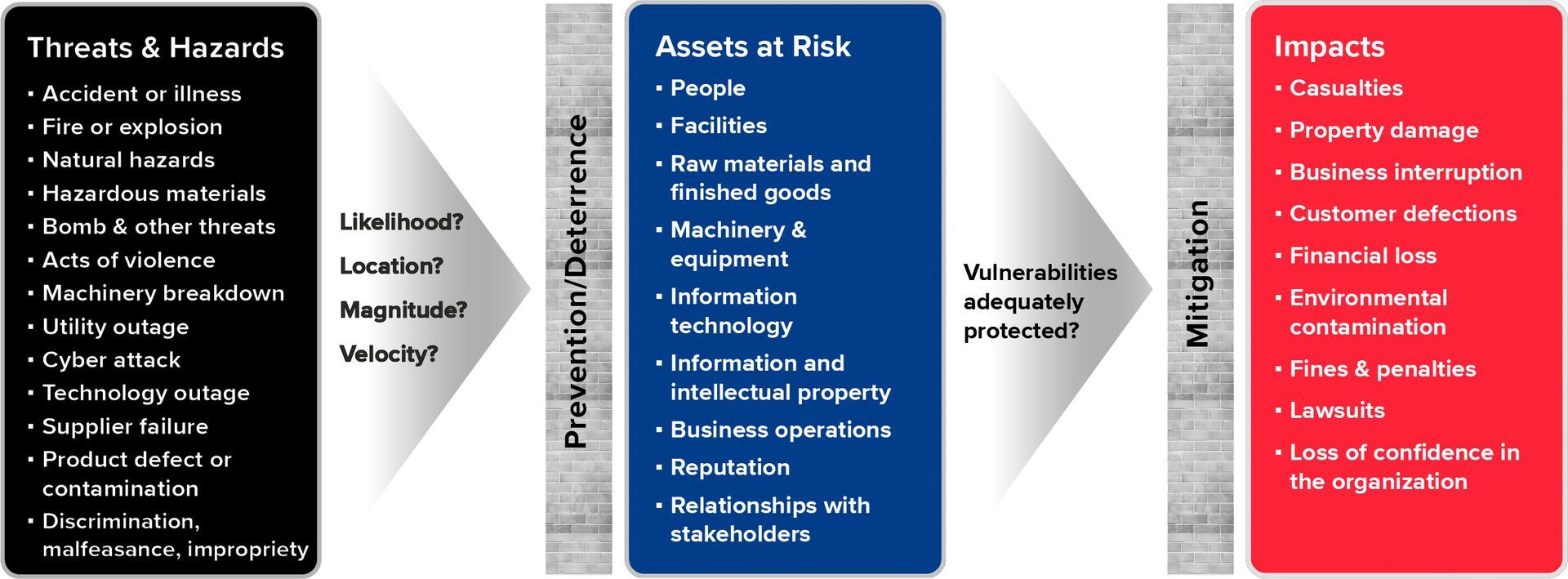
The risk assessment process.
Prevention and deterrence reduce the likelihood that a hazard will occur. Mitigation reduces the potential severity of impacts caused by the hazard.
Risk assessment looks outward and then moves inward. Understanding the vulnerabilities of infrastructure supporting a facility, hazards from surrounding properties, the site layout, building construction and protection, and the location and concentration of people, critical operations, systems, and equipment is essential to assessing the potential scope and magnitude of impacts on life, property, and operations.
Assessment of operational impacts should follow the process of a business impact analysis, which is foundational to business continuity planning.
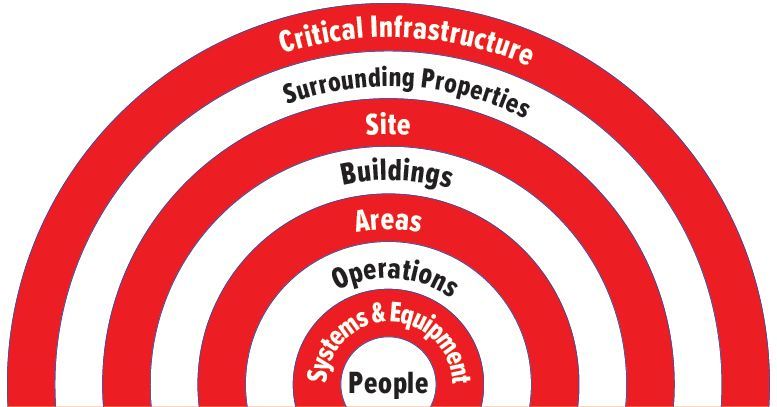
Risk Assessment Services
Preparedness, LLC surveys facilities to assess property hazards and operational risks using codes, standards, and “highly protected risk” insurance underwriting criteria. We write detailed reports with findings and recommendations for reducing risk.
We compile risk scenarios into a database that can include all facilities within the organization. We develop objective criteria specific to each organization that is embedded into the database to rate the probability of occurrence and the severity of impacts (e.g., life safety, property, operations, environment, reputation, and financial). The formula that calculates an overall rating for each scenario is customized for each client.
We work with our clients to standardize the fields of risk information to enable compilation of a company-wide risk database to provide senior executives with a single, go-to source for decision-making. The database has capabilities to filter, sort, and aggregate risk scenarios by overall hazard rating, business unit, location, type of hazard, or specific type of impact. Our analyses provide management with the information needed to make effective risk management decisions to accept, deter, prevent, mitigate, or finance risk. Our business impact analyses provide more detailed information to determine business continuity strategies and requirements and to assess business interruption insurance limits.
Preparedness, LLC’s risk assessment related services include:
- Loss prevention surveys
- Recommendations for loss prevention and specifications for hazard mitigation
- Threat and hazard assessments
- Security and vulnerability analyses
- Evaluation of compliance with codes, standards, and regulations
- Business impact analyses
- Business interruption and interdependency analysis
- Loss estimates studies
- Multi-location comparative risk analysis
- Risk database compilation
Loss Prevention & Risk Mitigation
We survey facilities to assess hazard and operational risks, and we make detailed recommendations to enhance protection. We evaluate the protection of a facility using “highly protected risk” standards of the insurance industry as well as model fire prevention and life safety codes enforceable across the United States.
We develop strategies to prevent hazards, deter human-caused intentional acts, and mitigate the impacts of hazards that cannot be prevented. We develop and help implement loss prevention and risk mitigation programs.
We can estimate loss potential and compile COPE (construction, occupancy, protection, and exposure) data into an electronic database for marketing property insurance programs. We also coordinate third party loss prevention services and provide direction to support risk management.



